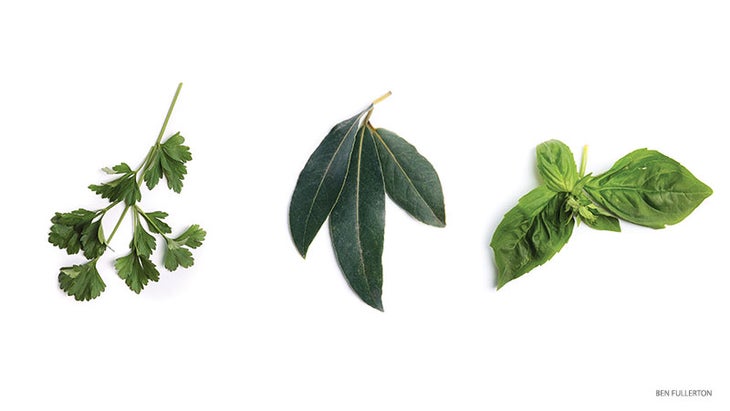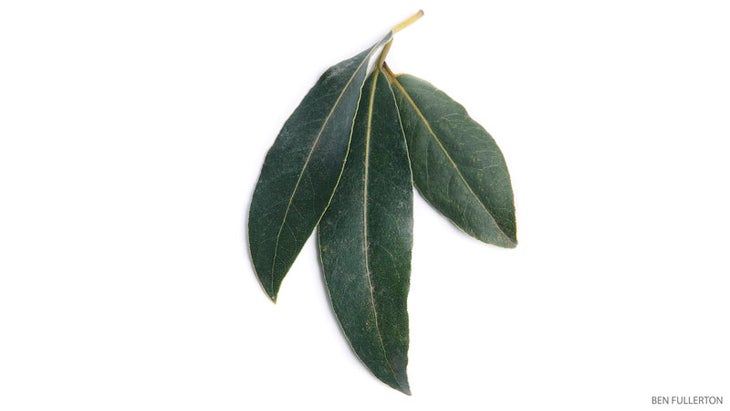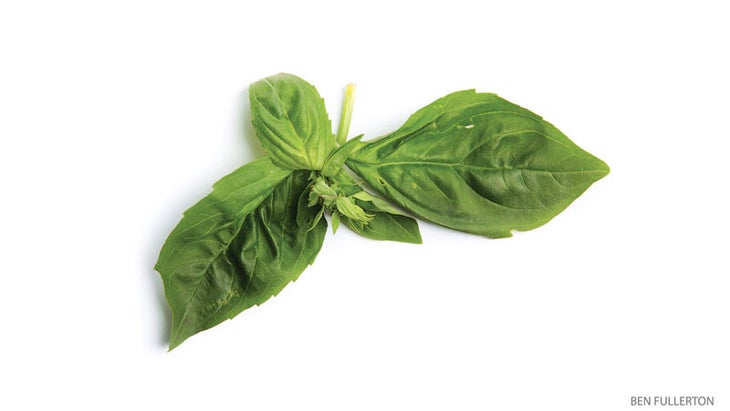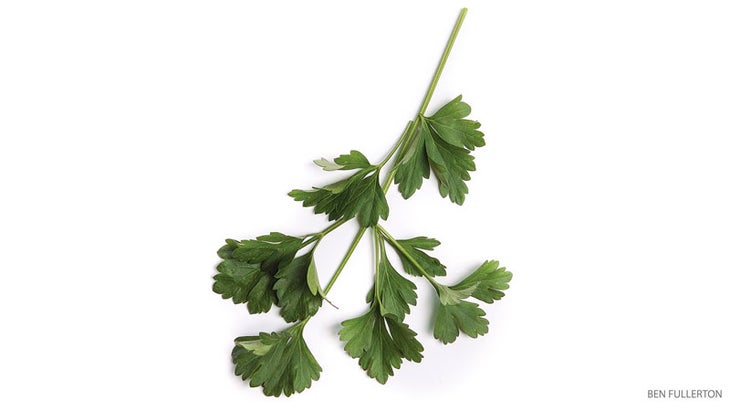Heading out the door? Read this article on the new Outside+ app available now on iOS devices for members! Download the app.
All About Herbs

Fresh herbs—one of the simplest and healthiest flavor-enhancers out there—will be abundant soon. Katherine Polenz, author of Cooking for Special Diets, gives her advice on storing and cooking with these versatile green gems. Plus, we’ve got tips for growing a few in your kitchen.
Cool storage
To prevent oxidation (oxygen causes blackening) and keep herbs up to a week longer in the fridge, place them in a resealable container as soon as you get them home, slowly pour olive or grapeseed oil over them until they’re glistening, and cover with a tight-fitting lid.
See also Seasonal Healing: Ayurvedic Herbs for Spring
Bay Leaf

Sunlight: Low to high
Watering: Pour a little at a time. Soil should be consistently damp but not waterlogged.
Pruning: Pull individual leaves as needed, but alternate branches.
It’s the sort of herb that elevates your cooking by adding depth and aroma. The flavor is difficult to describe, but you will know when it’s missing.
GOOD FOR Enhancing stocks and soups (use one small bay leaf per gallon of liquid)
TRY IT In a cheesecloth, combine 1 bay leaf, 1 thyme sprig, 5 peppercorns, and 2 parsley stems, and secure with kitchen twine. Add to stock or soups; remove herb bundle before serving.
See also Canned Honeyed Pears with Chocolate Drizzle
Basil

Sunlight: Medium
Watering: Keep soil and roots moist at all times. Water thoroughly at least once a week, allowing water to run through the pot.
Pruning: Snip entire stems—as much as you’d like to use.
A member of the mint family, basil brings a fresh scent into your kitchen. If you grow your own, harvest the leaves early and often—basil can get somewhat bitter as it ages.
GOOD FOR Punching up sauces or salads with its pungent, licorice-like flavor
TRY IT Make a simple pesto. In a food processor, purée 1 cup basil leaves, 1/2 cup Parmesan, 1/4 cup pine nuts or almonds, 3 cloves garlic, and 1/3 cup olive oil.
See also Tomato Cloppino with Grilled Trumpet Mushroom ‘Scallops’ and Basil-Infused Oil
Parsley

Sunlight: High
Watering: Keep soil just-moist at all times. Check it at least twice a week.
Pruning: Cut off 1/3 to 1/2 of a stalk just above a set of leaves to encourage new growth. Vary height and position next time you trim.
So much more than a garnish, parsley packs plenty of vitamin K (2 sprigs supply almost 40 percent of your daily needs), vitamin C (1 cup chopped delivers your full daily amount), and antioxidants. Its mild, slightly peppery taste mixes easily into a variety of dishes.
GOOD FOR Blending into smoothies or sprinkling over seafood
TRY IT Substitute parsley for kale in your smoothie: blend 1 cup parsley, one apple, one orange, one banana, and some ice.
See also White Bean Dip with Parsley and Rosemary